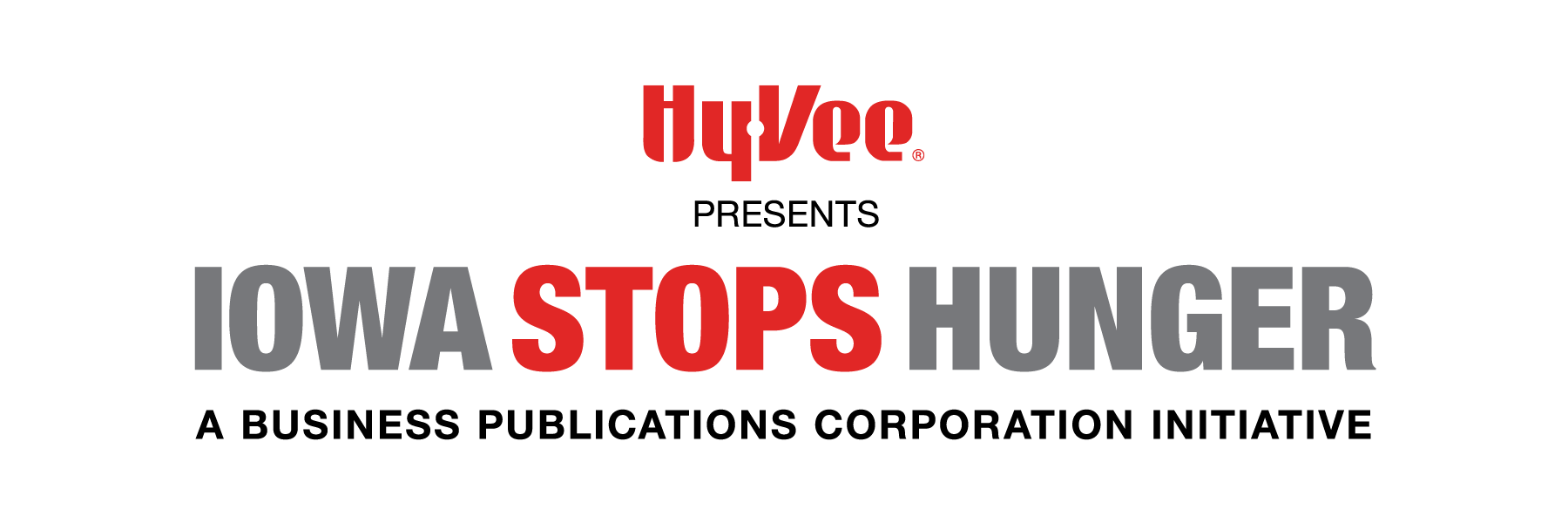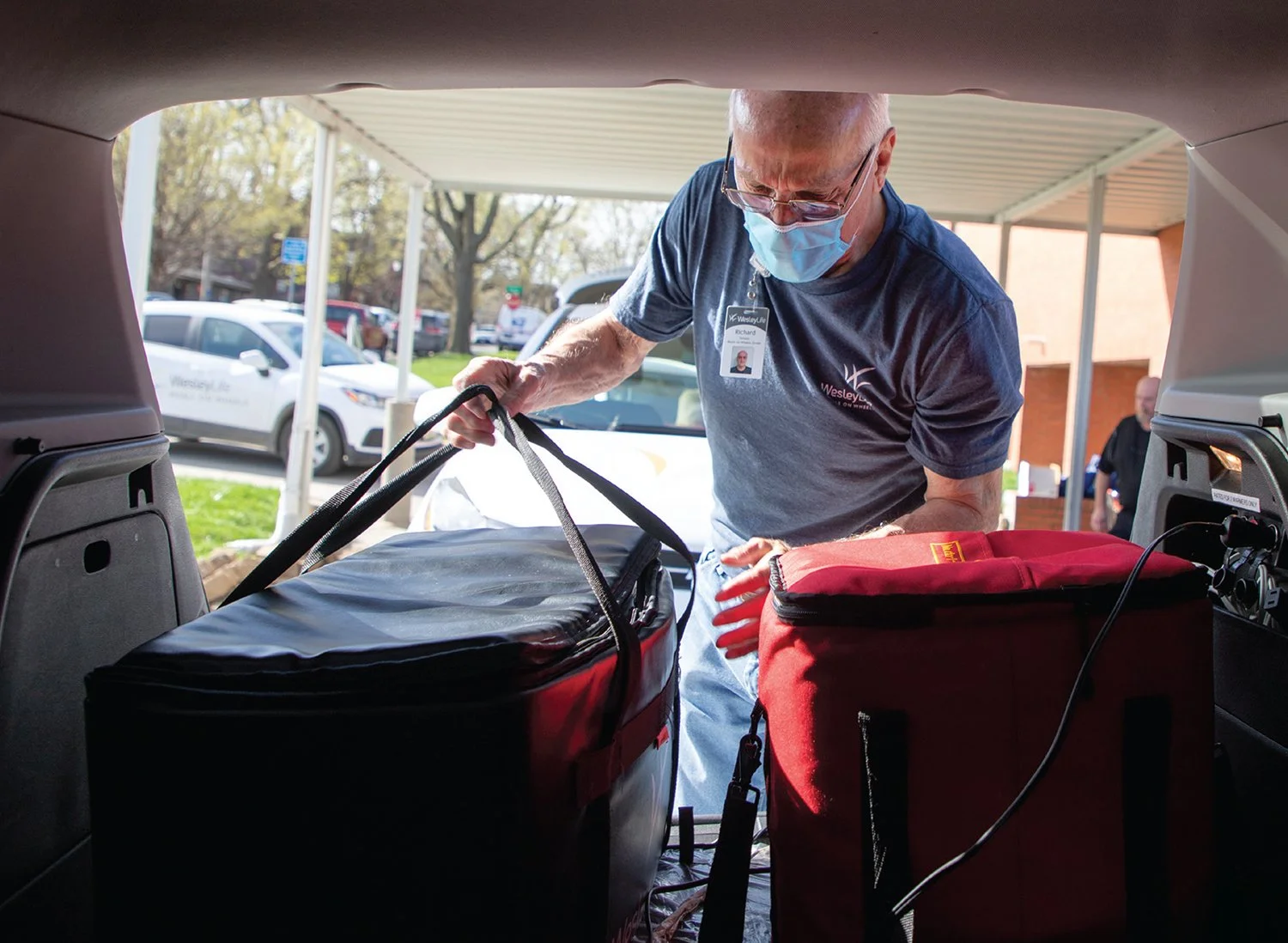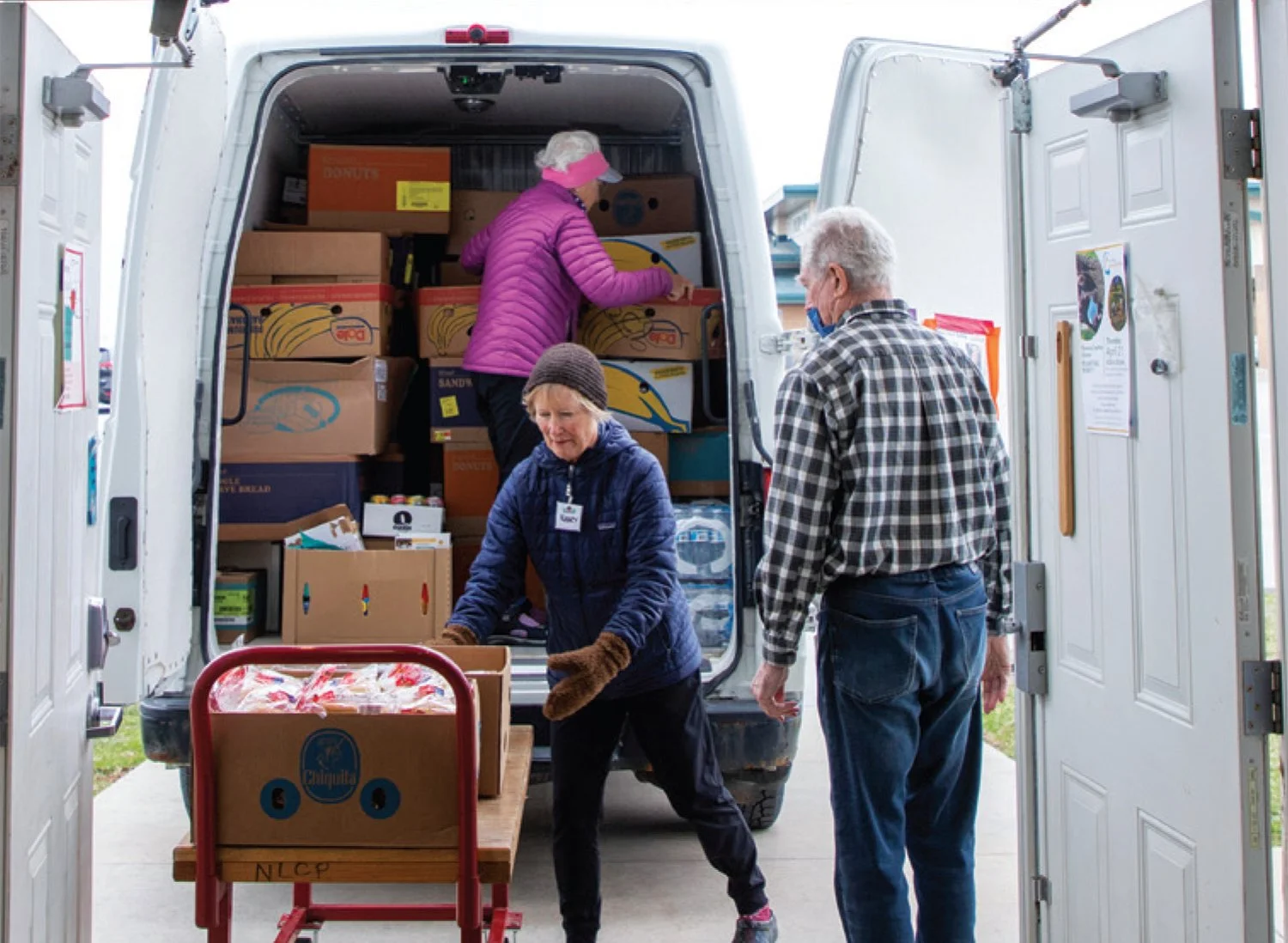A look back - Five years of Iowa Stops Hunger
When Business Publications Corporation launched the Iowa Stops Hunger initiative five years ago, the country was grappling with the onset of the COVID-19 pandemic. Food insecurity within our state was one issue that came into sharp focus as communities dealt with the turbulence that followed a global pandemic. As a media company, we decided to use our voice and inspire action through our Iowa Stops Hunger initiative.
Since then, we’ve explored the issue from various angles, met community members making an impact and seen firsthand many of the ways in which we can come together to alleviate hunger. Here, we take a look back at some of our most impactful stories from the last five years and see where things stand today.
Bishnu Rai, originally from Bhutan, farms through the LSI Global Greens program. Photo by Kathryn Gamble
FOOD FOR ALL (2020)
Then: In our first issue, longtime contributor Jody Gifford covered the unique challenges many immigrants and refugees face while battling food insecurity, from language barriers, cultural dietary differences and accessibility of federal assistance. Gifford told the story through the lens of Lutheran Services in Iowa and its efforts to provide culturally appropriate food options and empower refugee farmers through the Global Greens program.
This story brought to light the nuances of food insecurity within immigrant communities, emphasizing that access to food isn’t just about quantity but also cultural relevance and understanding. It spurred conversations about the importance of culturally sensitive food assistance programs and the need for more inclusive support systems.
Now: Five years later, initiatives like Global Greens have expanded. The program has not only increased the availability of culturally appropriate produce in local markets, it also now sells CSA boxes, hosts a farmers market and plant sale where proceeds support the immigrant and refugee farmers. Participating farmers and gardeners produced more than 1 million pounds of food in 2024. About 5,400 pounds were donated back to the community, and the rest resulted in $598,000 in sales through LSI supported markets, according to an LSI report.
New arrivals to Des Moines can also access support services at Global Neighbors, Polk County’s new refugee welcome center opening later this year.
Richard Sickels, a volunteer with Meals on Wheels for WesleyLife in Des Moines. Photo by Kathryn Gamble
OUT OF SIGHT, OUT OF MIND (2021)
Then: In 2021, dsm magazine took a deep dive into the lives of Iowa’s older adults, who are often overlooked in conversations about food insecurity and accessibility. The article highlighted challenges many seniors face, including mobility issues, limited income and the exacerbating effects of the COVID-19 pandemic, which led to the closure of many congregate meal sites. Programs like WesleyLife’s Meals on Wheels were featured for their role in delivering meals and providing vital human connection to isolated seniors.
The article demonstrated that food insecurity among seniors is not solely about income but also about physical limitations. Several elderly Iowans shared personal accounts about how meal delivery services have improved their quality of life, and those who deliver meals shared how they feel about helping out.
Now: 2024 data from the National Council on Aging reveals that over 80% of eligible older Iowans are not enrolled in SNAP, the second-lowest participation rate in the nation. Arduous application processes, like new stricter asset tests enacted by Gov. Kim Reynolds in 2023, contribute to the low number. In response, organizations like WesleyLife continue to expand their services for aging adults, delivering approximately 250,000 meals annually through Meals on Wheels.
Bambi Press, a health aging director with both the Iowa Department of Health and Human Services and the Nutrition and Aging Resource Center, works with older Iowans to get them the nutritional services they need. One of the initiatives she champions is the Iowa Cafe, a partnership of restaurants, food trucks, cafes, grocery retailers and convenience stores where participants in the program can receive nutritious meals and get a chance to socialize. We named Press a “Hunger Hero” in 2024 for her support of Iowa’s older population.
Mary Palmberg and Nancy Weber unload food from the Table to Table truck. Photo by Emily Kestel
FILLING THE GAPS (2022)
Then: Former Business Record Fearless editor Emily Kestel took a closer look at the critical role food rescue organizations like Eat Greater Des Moines and Table to Table in Iowa City play in reducing food waste and getting food to those in need. These groups work to divert surplus, edible food from landfills by collecting donations from grocery stores, restaurants, gas stations and other sources, then distributing them to food pantries, shelters and community fridges. The piece also highlighted Trader Joe’s and Kum & Go, two national organizations collaborating with food rescuers to reduce their own waste and support their communities here in Iowa.
By showcasing the efforts of these organizations, Kestel explained how some aspects of food insecurity can be mitigated with better logistics and solving distribution challenges, and brought attention to innovative solutions addressing both hunger and food waste. The story underscored the importance of community-based initiatives in creating a more efficient and equitable food system.
Now: Even today, around 40% of the food produced in the U.S. is thrown away. Food rescue has been a contentious subject as grocery stores and restaurants struggle to reconcile health codes and food safety regulations with food rescue efforts. Still, food rescue in Iowa has expanded. The nonprofit group Supply Hive took over Eat Greater Des Moines’ food rescue efforts in 2024 and continues to work with local grocery stores like Trader Joe’s and Gateway Market to coordinate rescue donations, and with the Iowa Events Center to collect uneaten, premade food from events the venue hosts throughout the year.
Ale Ortiz, the food rescue logistics manager with Supply Hive, said in a recent interview that it feels like food rescue has scaled up in many ways as the public becomes more aware and familiar with the process. The Food Bank and DMARC have both expanded their own food rescue operations as well. Ortiz added that gleaning, the process of collecting excess crops from farms, has also become a popular way for farmers to donate their excess produce and reduce farm waste.
Store manager Garren Zanker. Photo by Emily Kestel
RESTOCKING THE SHELVES (2023)
Then: Still hot on the Iowa Stops Hunger beat in 2023, Kestel documented the challenges faced by rural Iowa towns like Jewell and Malvern in maintaining access to essential grocery services. In Jewell, the sudden closure of the town’s only grocery store in January 2020 left residents without convenient access to fresh food, turning the area into a food desert. A similar tragedy struck the town of Malvern when the family-owned Mulholland Grocery burned down after 150 years in business. The article showed how a local grocery is vital for a rural town’s sustainability and quality of life.
This story also highlighted another importance of local grocery stores in rural communities, not just as places to purchase food but as essential hubs for community and economic stability. It brought attention to the broader issue of food deserts in Iowa and how living in a food desert can contribute to negative health and community outcomes.
Now: Since the article’s publication, both towns have recovered their grocery stores. Jewell Market has continued to serve the community, bolstered by local support, and Mulholland Grocery reopened in a new location on the town’s Main Street in December 2024.
In April of this year, the Iowa House unanimously passed a bill that would award grants up to $100,000 to grocery stores in rural areas for upgrades and equipment to prevent closures from creating more food deserts.
However, challenges persist for other small towns, including competition from larger retailers and lack of funding. Available data from University of Northern Iowa’s Waste Reduction Center still classifies 111 communities in Iowa as food deserts.
Hydroponic farmer Aaron Thormodsen at WesleyLife’s Meals on Wheels campus. Photo by Duane Tinkey
HUNGRY FOR INNOVATION (2024)
Then: In our last edition, Business Record editor Sarah Diehn shared two new agricultural initiatives in Central Iowa aimed at combating food insecurity with innovative technology and creative problem solving. The first, a new hydroponics farm at WesleyLife’s Meals on Wheels campus in Des Moines, was implemented to grow leafy greens with fewer resources than traditional gardens, enhancing the nutritional quality of WesleyLife meals without increasing production costs. The second spotlighted Iowa State University’s brand-new Kent Feed Mill and Grain Science Complex, a dedicated facility where ag students and researchers develop and improve grain processing, food shelf life and nutrition. The university was also leveraging the new research building to invite global collaboration to fight hunger across borders.
Leaders at both companies emphasized how technological innovation and scientific research can be focused to address hunger, leading to more efficient and nutritious food production.
Now: Since the publication, WesleyLife’s hydroponic farm has expanded its operations, increasing yearly production to reach 20,000 pounds of greens. These greens are now incorporated into a broader range of Meals on Wheels deliveries and are also supplied to the next-door Mediterranean restaurant, Hugo’s Wood-Fired Kitchen. The general public can also purchase a CSA subscription to receive boxes of the fresh greens grown in the hydroponic farm.
Iowa State University’s feed mill continues to advance its research, focusing on sustainable grain processing techniques to enhance food security.





